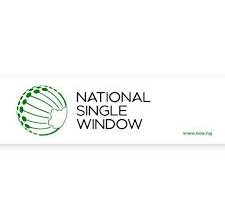BRT/Train accident: CILTN recommends delineation of roles for transport authorities
BRT/Train accident: CILTN recommends delineation of roles for transport authorities

…commiserates with families of victims
Segun Oladipupo
The Chartered Institute of Logistics and Transport of Nigeria (CILTN) has stated that infrastructures such as barriers, gate houses, rails and level crossings with adequate signage and audio warnings to alert motor vehicles on the approach of locomotives especially at intersections are necessary.
CILTN president, Barr. Mfon Usoro (Mrs) stated this while commiserating with families of victims of the BRT bus/ train collision which occured at Ikeja last week Thursday which claimed six lives with many passengers injured.
The Institute stated that the infrastructure provisions are in line with international best practices.
It further stated that to forestall such occurrence, a clear demarcation of responsibilities and efficient coordination between the road authority and the rail authority in managing intersections in the short term.
Her words, “The party responsible for funding safe operations of the rail infrastructure should be revisited. The present system of shared financial responsibility for the provision, manning and maintenance of the safety of infrastructure at intersections, CILTN observed, appears cumbersome and leaves room for lack of accountability.
“The party responsible for funding safe operations of the rail infrastructure should be revisited. The present system of shared financial responsibility for the provision, manning and maintenance of the safety of infrastructure at intersections, CILTN observed, appears cumbersome and leaves room for lack of accountability.
It called for proper delineation of roles and adequate budgetary funding for the Nigerian Railway Corporation.
“There are minimum safe distances that must be observed at stops and intersections. A train requires a minimum of 320m adequate distance (safety over-run). This implies that to stop a train in motion, the driver must apply the brake about 320m to the stop point.”
“Level crossings are essential safety infrastructure for the free flow of transportation where there are intersections between two or more modes of transport”, CILTN stated.
The Institute said it is extremely difficult to successfully manoeuvre and stop a train in motion with shorter safety over-run.
This makes it necessary to install functional and well-manned road safety infrastructure at specific points and intersections. These barrier include road bumps, speed retarders, etc. In addition, law enforcement agents should be stationed at the level crossings to compliment the work of gate keepers.
CILTN called for aggressive safety awareness campaigns by relevant agencies such as the Federal Road Safety Commission (FRSC) and State traffic agencies to educate commuters on safety on the road and rail.
As a long term measure, CILTN suggested, number of intersections should be reduced even as separate routes for rail tracks and roads is encouraged.
“New constructions should, as far as is practicable, not include intersections in designs. Flyovers or tunnels are preferred options.”
Mrs Usoro commended the Federal Government for empanelling with despatch an investigation into the Ikeja train crash.
“The CILT re-iterates its call for the Government to set up an independent body that will be tasked with investigation of all transport-related accidents as recommended in the National Transport Policy. It is not best practice to expect the agencies directly or indirectly involved in accidents to investigate themselves.”







